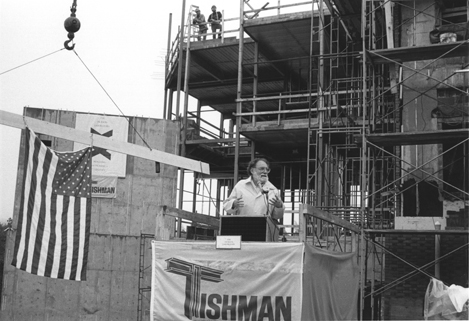
Faculty Research 1990 - 1999
Transgenetic studies implicate interactions between homologous PrP isoforms in scrapie prion replication.
Document Type
Article
Publication Date
1990
Keywords
Blotting-Northern, Blotting-Western, Brain: me, mi, pa, Enzyme-Linked-Immunosorbent-Assay, Hamsters, Mesocricetus, Mice, Mice-Transgenic, Nerve-Degeneration, Prions: ge, ph, RNA-Messenger: ge, Scrapie-Agent: ge, ph, Support-Non-U, S, -Gov't, Support-U, S, -Gov't-P, H, S, Transcription-Genetic, Viral-Proteins: ge, Virus-Replication
First Page
673
Last Page
686
JAX Source
Cell 1990 Nov 16; 63(4):673-86.
Grant
AG02132, NS14069, NS22786
Abstract
Transgenic (Tg) mice expressing both Syrian hamster (Ha) and mouse (Mo) prion protein (PrP) genes were used to probe the mechanism of scrapie prion replication. Four Tg lines expressing HaPrP exhibited distinct incubation times ranging from 48 to 277 days, which correlated inversely with HaPrP mRNA and HaPrPC. Bioassays of Tg brain extracts showed that the prion inoculum dictates which prions are synthesized de novo. Tg mice inoculated with Ha prions had approximately 10(9) ID50 units of Ha prions per gram of brain and less than 10 units of Mo prions. Conversely, Tg mice inoculated with Mo prions synthesized Mo prions but not Ha prions. Similarly, Tg mice inoculated with Ha prions exhibited neuropathologic changes characteristic of hamsters with scrapie, while Mo prions produced changes similar to those in non-Tg mice. Our results argue that species specificity of scrapie prions resides in the PrP sequence and prion synthesis is initiated by a species-specific interaction between PrPSc in the inoculum and homologous PrPC.
Recommended Citation
Prusiner SB,
Scott M,
Foster D,
Pan KM,
Groth D,
Mirenda C,
Torchia M,
Yang SL,
Serban D,
Carlson GA,
Hoppe PC,
Westaway D,
DeArmond SJ.
Transgenetic studies implicate interactions between homologous PrP isoforms in scrapie prion replication. Cell 1990 Nov 16; 63(4):673-86.

